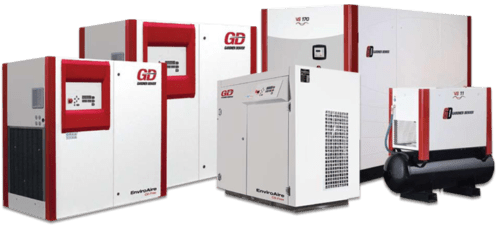Benefits of Oil Free Air Compressors

Air compressors, like many other types of mechanical equipment, require adequate lubrication to ensure maximum longevity and optimum performance. The piston, in particular, needs to be able to draw and compress air with minimum frictional resistance. In this regard, air compressors are available in two primary configurations: oil vs oil free air compressor systems.
In oil-lubricated compressors, oil is used to reduce the friction between the piston and the walls of the piston chamber. Oil may even be splashed onto the walls and bearings of the cylinder by means of an oil bath. This type of compressor is also referred to as oil-flooded.
On the other hand, oil-free compressors, as their name suggests, do not require lubrication oil. Instead, the piston is pre-lubricated with a Teflon (PTFE) coating. Teflon has one of the lowest coefficients of friction among any solid due to its layered structure, which possesses relatively weak intermolecular bonding forces. These layers easily slide past each other with minimal effort, significantly reducing the friction between the coated elements.
While many compressors in use today are oil-lubricated, oil-free compressors are quickly gaining popularity among various industries. Oil-free compressors are less expensive and capable of achieving the same level of performance as their oil-lubricated counterparts in most applications, making them ideal for myriad industrial purposes.
However in the case of oil vs oil free air compressor machines, which one does your business need?
Oil Vs Oil Free Air Compressor: Which One Is Best for You?
One of the defining features of oil-free compressors is the absence of interaction between the lubricating oil and the compressed air. In oil-lubricated compressors, the air inevitably comes into contact with the oil, introducing a degree of contamination.
Oil droplets, vapors, mist, or liquids can make their way into the output compressed air. This problem is eliminated in oil-free compressors, leading to a better quality compressed air supply. This is especially valuable in applications where air quality is paramount, such as in dentistry or cleanroom compressors.
Oil-free compressors are also significantly lighter than oil-lubricated compressors, making them ideal for commercial applications that require portability, such as tire inflation, jackhammering, medical air supplies, and roadside assistance pneumatic tools.
Oiled compressors, on the other hand, are bulkier, heavier, and often require mounting. This makes them better suited for situations where the equipment does not require frequent relocation.
How to Maintain an Oil-Free Air Compressor
Oil-free compressors are especially renowned for their minimal maintenance requirements. The absence of lubricating oil combined with the self-lubricating nature of the Teflon coating means that the cylinder requires no further lubrication, eliminating the need for scheduled oil changes.
However, oil-free does not translate to maintenance-free. These pumps must still undergo routine maintenance to ensure safe and efficient compressor operation and optimal service life. Oil-free air compressor maintenance usually consists of checking the following components:
Safety valve
When inspecting the compressor safety valve, first ensure that the compressor is plugged in and allowed to reach its shut-off pressure. Next, remove the safety valve ring to release the pressure from the tank and observe the valve. If the air is not discharged, or if the valve does not close automatically, then the valve may need to be replaced.
Compressor tank
Condensation can cause water droplets to build up inside the tank. Ensure that that tank is adequately drained after each use by locating the drain valve and allowing the tank to drain completely.
Air filter
Be sure to inspect the filter for dirt build-up and wear. Depending on the compressor model, the location, and type of filter (paper, felt, or foam) may vary. Paper or felt filters with significant contamination buildup need to be replaced. Foam filters can be cleaned with soap and water and replaced upon drying. All damaged or worn filters should be replaced immediately.
Additionally, an overall inspection of the compressor should be routinely conducted. Inspect various components such as hoses, valves, power cords, fittings, and seals for damage and signs of wear. The tank’s exterior should also be checked for rust damage, pinholes, or other weak spots. It is important to note that damaged tanks should be replaced immediately. Never attempt to weld, drill, or otherwise repair the compressor tank.
At Energy Machinery, we offer a comprehensive range of oil-free compressors for almost any industrial application. If you would like to find out more about our line of oil-free compressor solutions, feel free to view our equipment catalog or request a free quote today.







